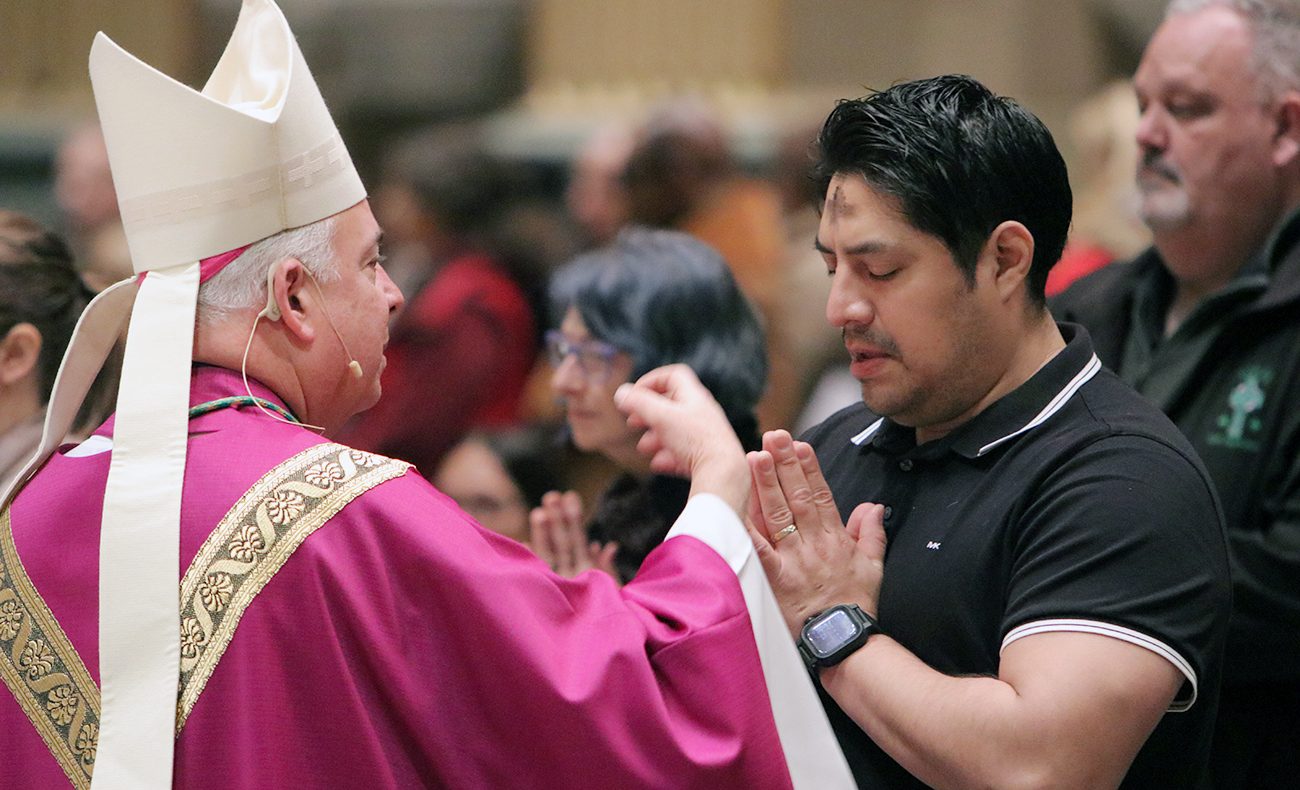Lent is a 40-day period of prayer, fasting, and almsgiving from Ash Wednesday through Holy Thursday in preparation for the celebration of the sacred Paschal Triduum and the Easter season.
On Wednesday, Feb. 22, blessed ashes were distributed to the faithful at Masses and Liturgies of the Word throughout the Archdiocese as a tangible reminder to repent and believe in the Gospel.
The Meaning Behind Ashes
But why ashes? Have you ever wondered how ashes became a symbol of Lent or what they symbolize?
Ashes are traditionally worn as an outward symbol of repentance, humility, and mortality as part of a custom in the Church dating back to at least the 5th century. Even farther back, the Old Testament gives us accounts of sinners rolling or sitting in ashes or putting them on their forehead when seeking forgiveness from God for their sins.
“I think that as we get caught up with so many things in life, it’s a reminder about perspective,” said Father Matthew Trailes of St. Francis of Assisi Parish in Springfield, Delaware County.
During the imposition of ashes, the priest typically says one of two things. The first is “Remember man thou art dust and unto dust thou shalt return.” It is taken from the Book of Genesis (3:19) and points to our inevitable mortality. The other is, “Repent and believe in the Gospel.” These words are adapted from Mark 1:15. They remind us of our flaws and the need for grace.
“You can always turn away from the things you’re not happy with and make changes,” said Fr. Trailes. “For me, that’s really important, a continuous reminder that we can do things differently.”
The Tradition of Receiving Ashes
Receiving ashes has long been a traditional way to begin Lent for many Catholics. Ashes distributed on Ash Wednesday come from burning the previous year’s palm branches used at Masses on Palm Sunday.
Many churches continue the tradition of having their congregants bring palms from home to be burned to embers for the start of the Lenten season.
It is hoped that as faithful worshipers receive ashes, either in the form of a cross on the forehead or through them being sprinkled, they will take the time to remember the deep meaning behind them and how this will help in their Lenten journey.
This year, the 2023 Lenten Season began on Wednesday, Feb. 22. Easter will be celebrated on Sunday, April 9.
PREVIOUS: Journeying through Lent with prayer, fasting, and almsgiving
NEXT: Taking it beyond 40 days — Lent in your life




Share this story